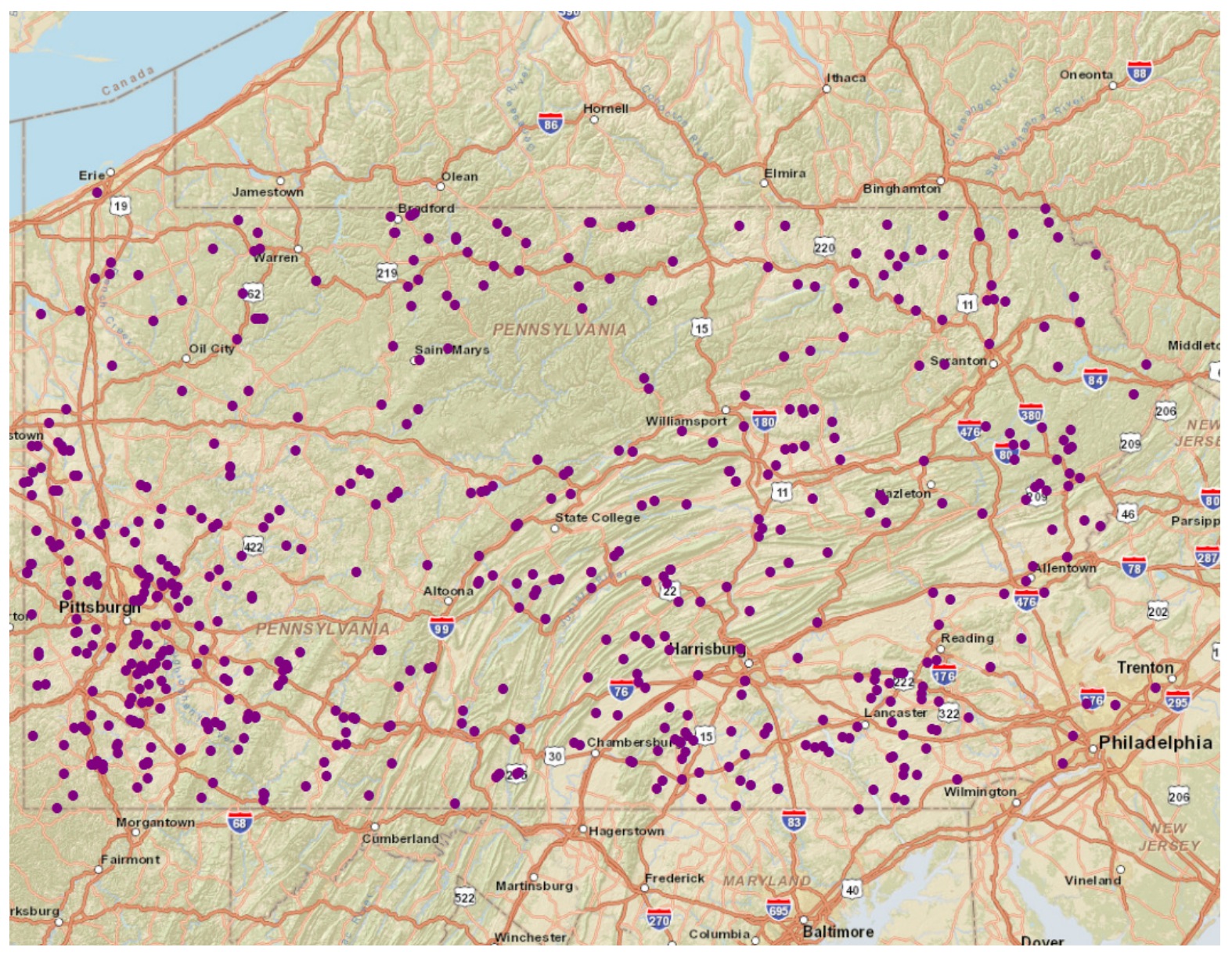PENNSYLVANIA DEPARTMENT OF TRANSPORTATION
Rapid Bridge Replacement Project
The following Q&A was developed for the Rapid Bridge Replacement Project, an initiative designed to bolster the ongoing effort to address the state’s nearly 4,200 Structurally Deficient (SD) bridges. The Commonwealth is taking advantage of the new P3 tool that Governor Tom Corbett signed into law in 2012. With the P3 approach, we can replace hundreds of these bridges more quickly, save money and minimize the impact on the traveling public. SD bridges are not unsafe but pose a serious problem that jeopardizes our ability to grow economically and create jobs. This initiative, in conjunction with Pennsylvania’s new comprehensive transportation funding law that Corbett signed on Nov. 25, 2013, will bring much needed investment to the state’s bridges.
Why is PennDOT focused on SD bridges?
Pennsylvania confronts a significant and somewhat unique challenge among the 50 states: roughly 18 percent of Pennsylvania’s bridges are structurally deficient while the national average is 7.3 percent. Unless replaced, these bridges will ultimately have to be closed, jeopardizing public safety and harming the state’s ability to grow economically and create jobs. An SD bridge is not unsafe. However, the designation means that one or more of its major component is deteriorating. PennDOT has been aggressively addressing this problem, reducing the total number of SD bridges from 6,000 to roughly 4,200. The Rapid Bridge Replacement Project will allow PennDOT to intensify this effort, with the initiative expanded because of Act 89, the state’s comprehensive transportation plan.
Why use the P3 approach?
The P3 law was enacted by the PA General Assembly and signed by Governor Tom Corbett in 2012, providing PennDOT with another tool to address the state’s infrastructure needs, including the challenge of replacing SD bridges. The P3 approach will:
- Allow PennDOT to Replace SD bridges more quickly by allowing future funding to be moved forward to get projects completed today at current costs instead of several years or even decades later.
- Generate savings for PennDOT and Pennsylvania’s taxpayers in the short-term and over the life of the bridges. P3 projects generate efficiencies of scale in the design and construction phase and, over the long term, can generate maintenance savings.
- Allow PennDOT to use these savings to address other infrastructure needs.
- Minimize impact on travelling public with the accelerated project schedule.
How did PennDOT identify the eligible bridges for this initiative?
More than 2,000 SD bridges were screened by the team throughout the selection process. A host of factors were considered, including age, length, number of lanes, and average daily traffic, as well as impact on utilities, railroads, and a wide range of potential environmental impacts. All of the bridges are relatively small – many only single-span, two-lane structures – of similar characteristics.
What are “early completion bridges” and how were they chosen?
The department selected batches of bridges in two regions of the state to advance in preparation for construction in 2015. PennDOT secured right of way and permitting approvals for those bridges to help accelerate the project and ensure the replacement of bridges began quickly after awarding the contract.
Will Pennsylvania-based contractors have an opportunity to participate in this initiative?
We are confident that much of the construction will be done by local contractors and this P3 will benefit Pa. businesses in several ways. First, it simply is not realistic that one firm or even a handful of firms would be in a position to take on 558 bridge replacement projects that are spread out across the state. Under a similar P3 program in Missouri, for instance, the successful bidder bid out 30 separate construction packages to subcontractors. Secondly, our approach will free up dollars immediately and over the long haul for additional traditional projects. This will only help local contractors. Finally, we have been reaching out to the industry to educate Pennsylvania firms regarding this opportunity.
View full version (p3forpa.com): Rapid Bridge Replacement Project
About the Pennsylvania Department of Transportation
www.dot.state.pa.us
PennDOT was created in 1970 when the former Department of Highways was merged with transportation-related functions from the Departments of Revenue, Commerce, Community Affairs and Military Affairs. With an annual budget of more than $6 billion in state and federal funds, PennDOT overseas programs and policies affecting highways, urban and rural public transportation, airports, railroads, ports and waterways.
Tags: P3, PA, PA DOT, PennDOT, Pennsylvania, Pennsylvania Department of Transportation, Rapid Bridge Replacement Project







 RSS Feed
RSS Feed